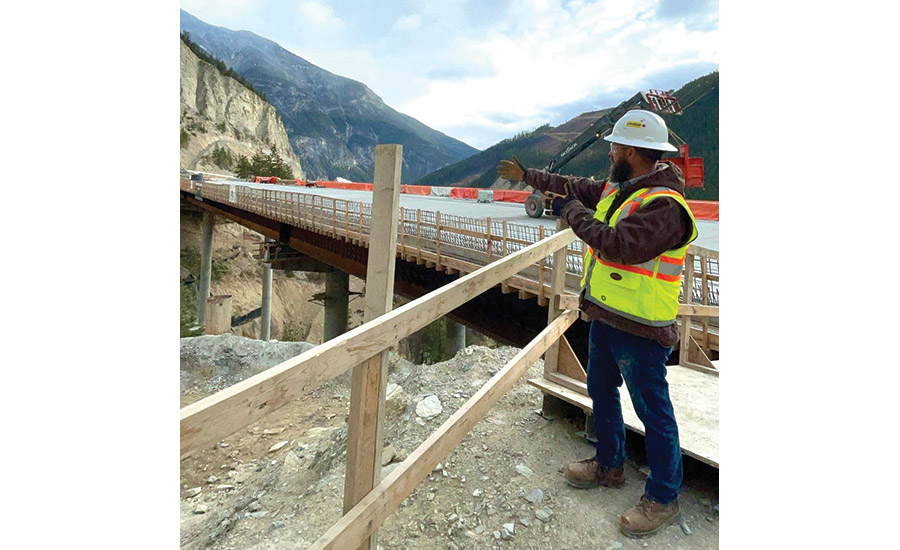
Related Article:
Cliffhanger: $451M Upgrade for Treacherous Stretch of Highway 1 in British Columbia
Back to:
25 Top Newsmakers
Brian Witte was just a freshman in high school when he launched his infrastructure career. “It was a small town in Iowa, and the teacher’s neighbor was the town engineer for a dozen communities,” recalls Witte, vice president of construction engineering for Parsons Corp. “They needed help. I got hired at $4.65/hour, doing drafting of street reconstruction. We’d develop drawings, do surveying, layouts, inspections—curb and gutter and drainage from beginning to end. It was super fun, interesting; I just had dumb luck.”
His subsequent years working with civil contractors confirmed the conviction that “I learned I need to be in the field, not just sitting behind the desk,” he says. With the Kicking Horse Canyon project, he not only was in the field, but spearheaded key solutions to make smoothing out a treacherous, winding stretch of two-lane highway possible within the allotted schedule and budget.
Kicking Horse Canyon Constructors (KHCC), a design-build joint venture of Aecon, Parsons and Emil Anderson, won the $331-million contract in 2020 to realign and upgrade the remaining section of Trans-Canada Highway 1 to four lanes from two, eliminating 13 hairpin curves. Crews built four bridges, nine viaducts and seven mechanically stabilized earthwalls, conducting major cuts and excavations, relocating utilities and mitigating rockfalls and avalanches. Even harsh winters have not stopped the fast-track project, which is on schedule for completion this winter.
The site crosses a series of unstable slopes, and the rough concept given to the design-build team had a conventional solution of stabilization pipe piles installed in front of retaining walls to support the highway. But after extensive geotechnical exploration, engineers realized that such piles would need to be of large diameters and installed with very tight spacing, often with rock anchors restraining the pile top. These would be costly and time-consuming to install, and would require extensive, complex temporary access and stabilization for equipment.
The rough plan had four or five bridges in preliminary design, but Witte conceived of the idea of launching bridges and viaducts sideways to reduce piling and the need to access difficult locations. The four bridges have varying span lengths ranging from 30-70 m and are typically over deep gullies of up to 65 m deep. The viaducts have consistent, repeating short spans of approximately 23 m, and are generally less than 5 m above existing ground.
“I remember looking at the Big Horn bridge drawing,” says Witte. “It was just a three-span bridge but it was so far away from the road. How will we get out there? There was no room for building launching beds or abutments.” The “beauty” of launching girders sideways, he adds, is that “now there is no more steel needed than for permanent structures.”
“I have known Brian for almost 20 years and have worked with him on several challenging projects over that time,” says Mike Gash, construction manager for KHCC. “I have relied on Brian’s expertise and knowledge countless times for seamless solutions to complex problems. His innovative designs and work on the Kicking Horse Canyon Phase 4 Project were no exception to this and were a major factor in the success of the project.”
Witte says teamwork was the key to success. “It’s somewhat rare that concepts you develop prebid actually get executed in the plans,” he says. “This felt like a perfect storm. This owner, our team—it was the right team. Everything came together to make it work.”
All ENR 2023 Top 25 Newsmakers will be honored at the Award of Excellence Gala on April 11 in New York City.





Post a comment to this article
Report Abusive Comment